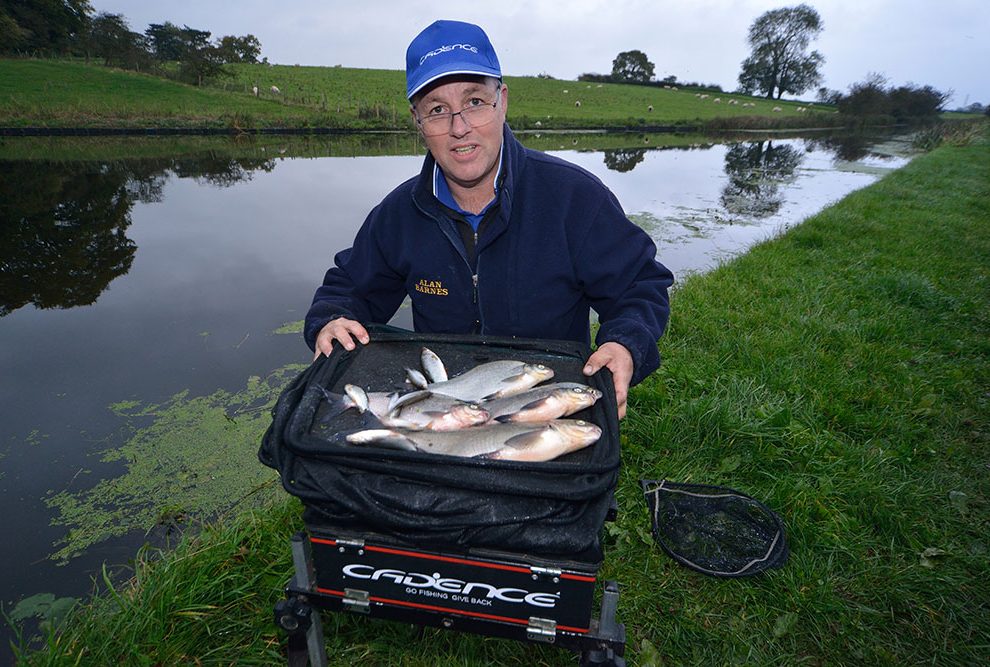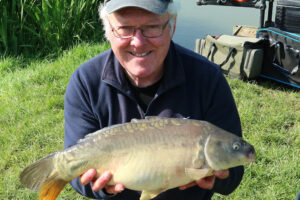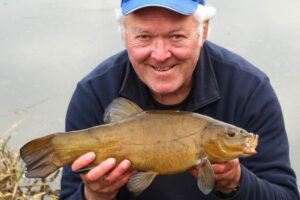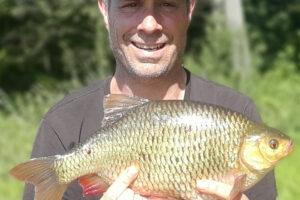Bream, that most enigmatic of species. Obliging on the one hand, evasive on the other. Take your pick; both adjectives apply in the fullest sense to the common or bronze bream.
When they feed you can enjoy some hectic sport, but when they don’t it can be a very frustrating experience. Luckily, a few decided to have a munch when I took to the towpath for this blog.
I was asked by my good friend, Cadence UK main man James Robbins, if I would showcase the merits of the Cadence CR10 #1 10ft wand, teamed with the Cadence CS10 reel. I put both through their paces and they did not let me down in the slightest.
The chosen venue was the picturesque Lancaster Canal, or ‘the Lanky’ as we Prestonian and Mancunian anglers tend to call it.
For the princely sum of £20 a year, you can become a member of the organisation that holds the fishing rights to the canal, the Pike Anglers Club of Great Britain, allowing you miles and miles of water to go at.
The canal begins at Preston and heads north via the Fylde at Salwick, where this blog was photographed, and then north through the pretty market town of Garstang and up and beyond Lancaster to Tewitfield, on the Lancashire/Cumbria border.
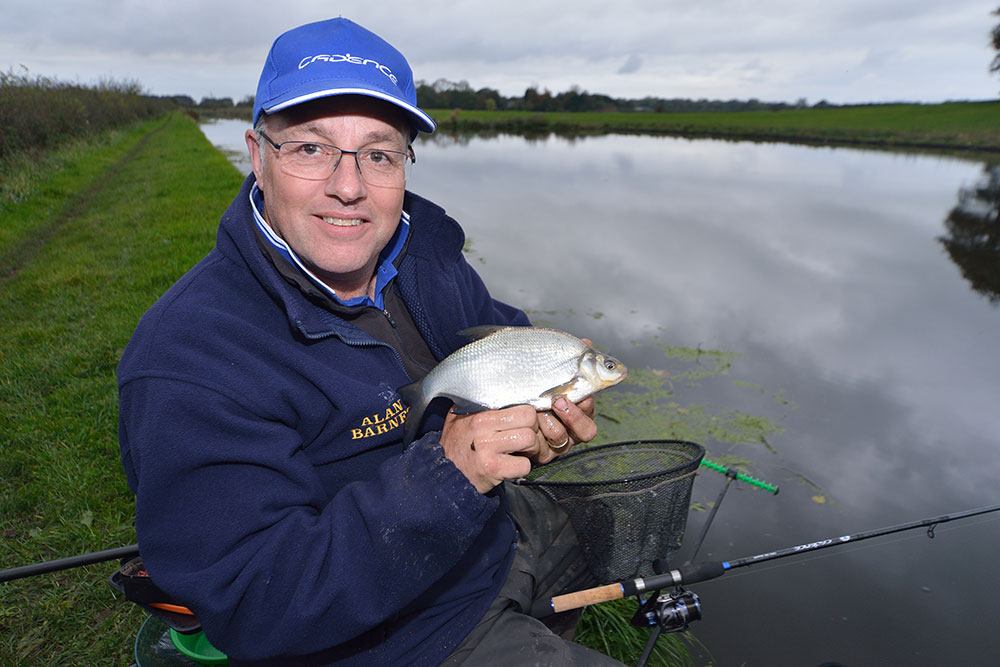
cadence CR10 10ft No:1 wand
Salwick Basin is a renowned bream hotspot with the wide being about the size of a full football pitch. It does not receive the attention that it used to do as it is a walk of a quarter of a mile from the nearest access point, but it is worth the walk and the fish are pristine and totally wild – a perfect combination in my book.
Before I go any further I would like to inject a little humour into this write-up by pointing out that THE most vital ingredient in my carryall was a bottle of liquid molasses. Why? You may ask.
Well, a good friend of mine, Macclesfield tackle dealer Adam Barlow, is a red-hot bream angler, one of the finest in the country, in my opinion. Many years ago I was on the other side of the camera lens doing a feature on him at Rudyard Lake in Staffordshire. He talked me through his groundbait mix then commented that he always mixed the groundbait using water to which a generous glug of liquid molasses was added.
When I asked the simple question, why? He answered: “Because to me, going bream fishing without liquid molasses is like getting up and leaving the house having forgotten to put your underpants on.” Enough said!
It is a humorous and unforgettable analogy which has stuck with me ever since and I am not going to argue the point with Adam, whose track record, where catching the bronze warriors is concerned, is second to none.
So what else was in the bait bag? Personally, I never go bream fishing without at least a pint of casters, at least a quarter kilo of dendrabena worms for chopping, some squatts, a few dead pinkies to put in the groundbait mix, a few white and red maggots for the hook, plus an ample supply of redworms, or ‘garden worms’ as some people call them. You can also add sweetcorn to this list as it does work on the Lanky.
Groundbait-wise, my preferred mix comprises a pint of Alderson’s fine brown crumb, a pint of Sensas Lake 3000 black, and a third of a pint of Sensas Magic. That is enough for a five-hour session and any left over can have the particles removed by a riddle and then frozen once back at home for future use.
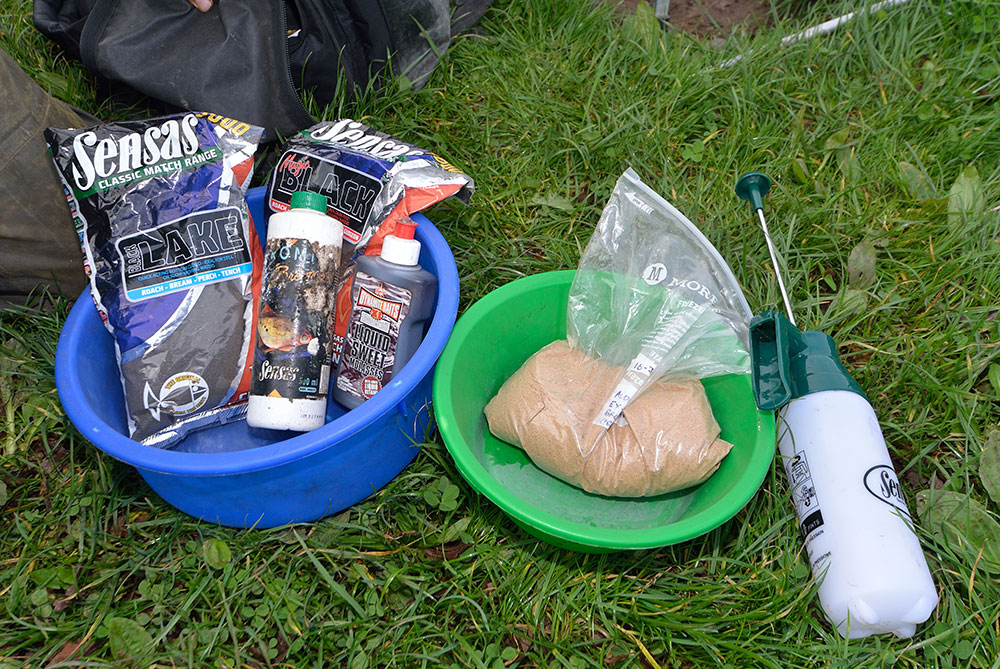
well for bream.
There is something about the smell of Sensas Magic that skimmers are drawn to. Let me illustrate this point. On a Ted Carter Tuesday Night Summer League match in early June this year, on the Lanky, the 13 hardy souls who braved 60mph winds all match found it a real struggle to fish the pole. Where I had drawn it was impossible with a gale coming straight into my face. Therefore, I opted to set up a picker rod and decided to fish for the duration on the tip, clipping up to cast 13 metres across to some lilies.
The original groundbait mix I chose was not attracting bites so an hour into the contest I mixed up some Sensas Magic and used this, going on to catch half a dozen very welcome skimmers and a hybrid to weigh 3lb 5oz, securing second place overall on the night.
When mixing the groundbait I always put a glug of liquid molasses and a glug of senses Aromix Bremes into the water. Both are sweet tasting and bream love the combination. I always riddle the groundbait 20 minutes after the initial mixing, and I also use a fine spray atomiser to add moisture as it normally requires a little bit more water after the initial mix absorbs the moisture. I give it one final riddle to remove any lumps and the mix is then ready for action.
At this stage let’s talk briefly about the Cadence CR10 # 1 10ft wand. It has been built using 40 and 36 tonne carbon. It also has Fuji Alconite guides and a Fuji screwdown reel seat with a Duplon grip in front of the reel seat and towards the bottom of the handle for good grip when casting. It has a good action with reserves of power in the butt and middle but also a through action, resulting in sufficient forgiveness not to rip out tiny hooks on fine hook lengths even when bonus fish are encountered. The hallmark of a top-class wand.
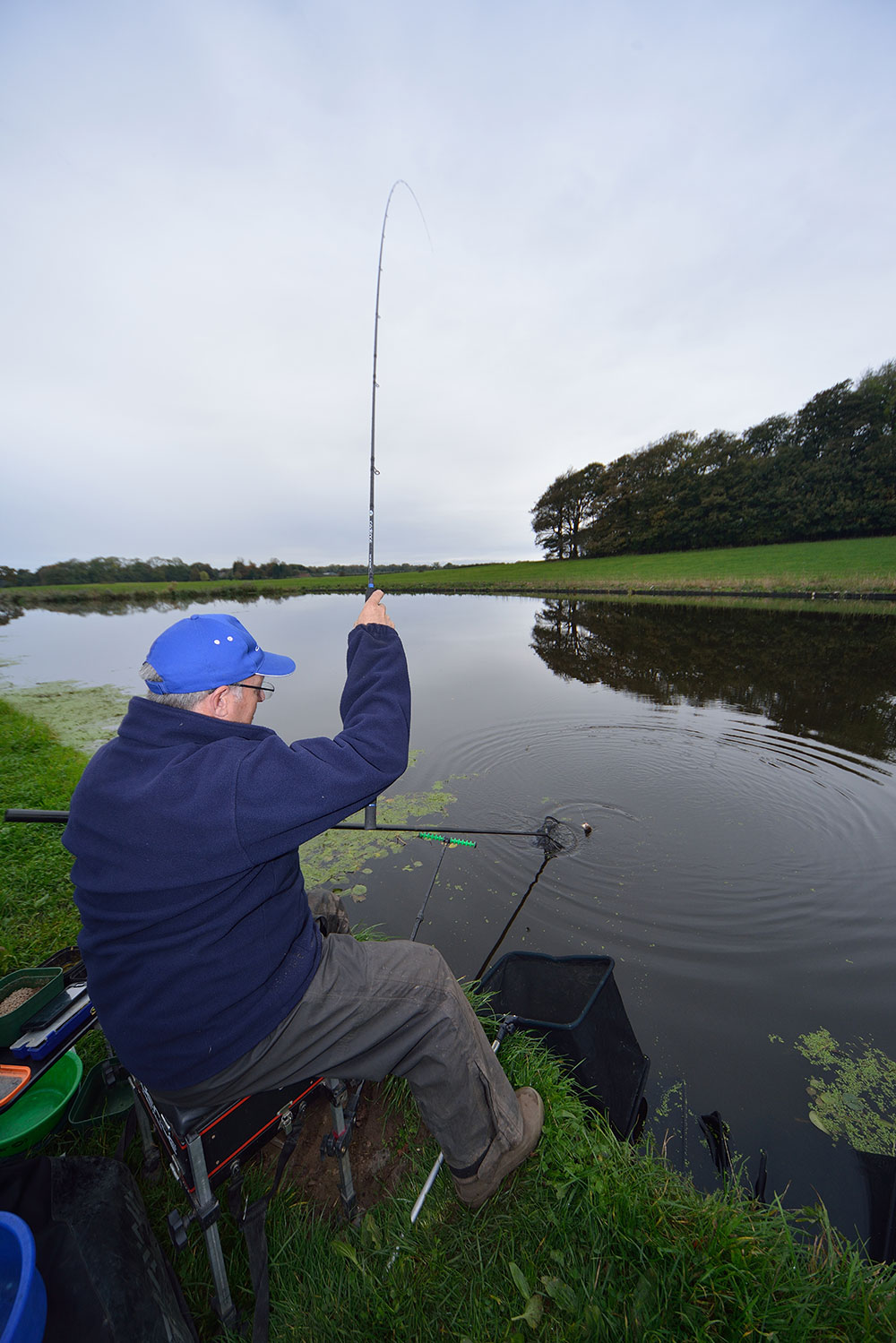
gasp lunges at the netting stage
It comes supplied in a cloth bag with three super sensitive fast taper glass tips. Thee tips are so fine they do remind me of the old classic Sigma Wand. A fish only needs to breathe on the bait and you see a pluck or a pull. As far as I know there is no other rod available in the market place today with such fine tips. In short, a rod built for a purpose.
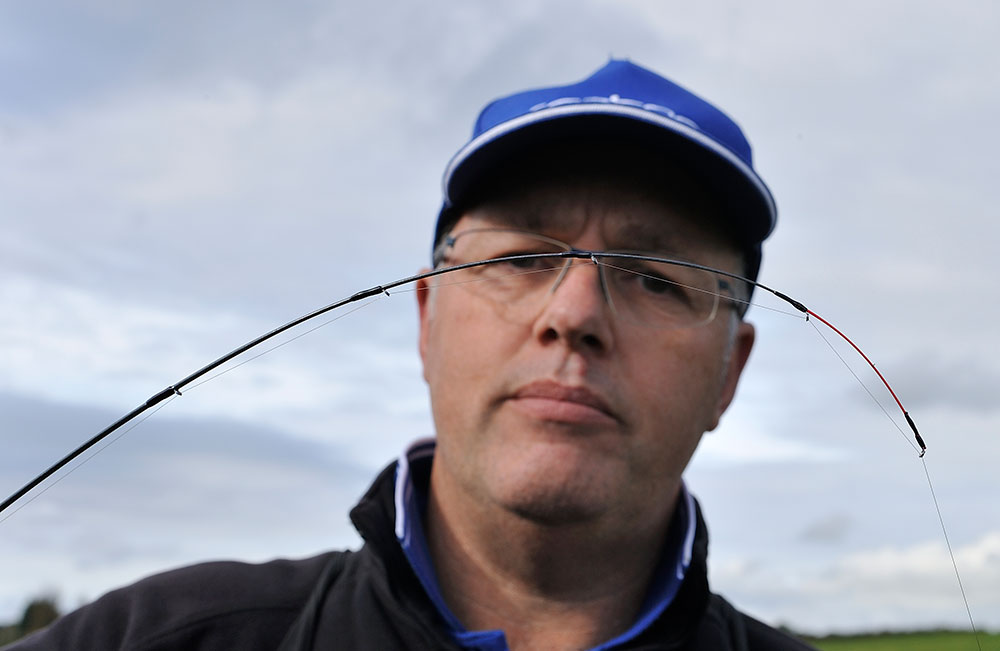
believe any other tackle company has a similar product on the market
However, you need power and compression in the butt section of the rod in order to cast a feeder accurately, so the marriage of power and finesse is a critical factor and James has harnessed both to create a sublime tool.
At Salwick Basin I was casting 30 yards to my marker; at times in a strong North Easterly side wind. No problemo!
I chose a far bank marker which was something white, maybe a bag?, on the camp sheathing (see picture where I am pointing). Many readers will be sufficiently experienced in the art of legering or feeder fishing to not need to be told to choose a permanent far bank marker – but for newcomers to this style of fishing my advice is simple: Don’t pick a marker that might move, such as a car, or a cow, or a flock of sheep!
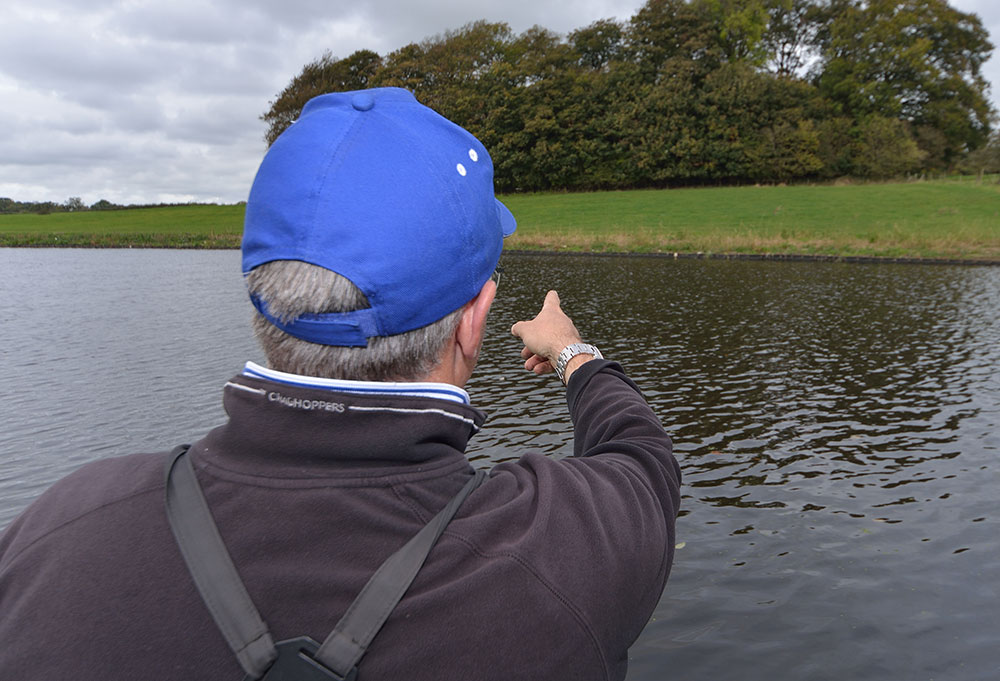
Back to the rod and I had used it once previously and caught a bream between 4-5lb on the River Ribble by accident when fishing and filming a video on the float. Was it a matter of luck? Well, getting the bite off the bream may have had some luck about it, but getting it out was never in doubt due to the rod’s forgiving playing action.
That day I was using a reel loaded with 2lb Maxima and was using a .10mm diameter hook length (1.5lb breaking strain) and a size 18 Colmic B957 hook. The rod handled the slab admirably in a powerful current with the river more than a metre above normal level.
For this Lancaster Canal blog I was using a Cadence CS10 3000 reel for the first time. It has 10 ball bearings and a lightweight magnesium body. The bale arm is smooth and the front mounted carbon fibre drag is super sensitive, enabling me to set the rod tip by pulling line from the reel once the feeder was in ‘the pantry’. The reel also has a spring-loaded line clip – another nice feature.
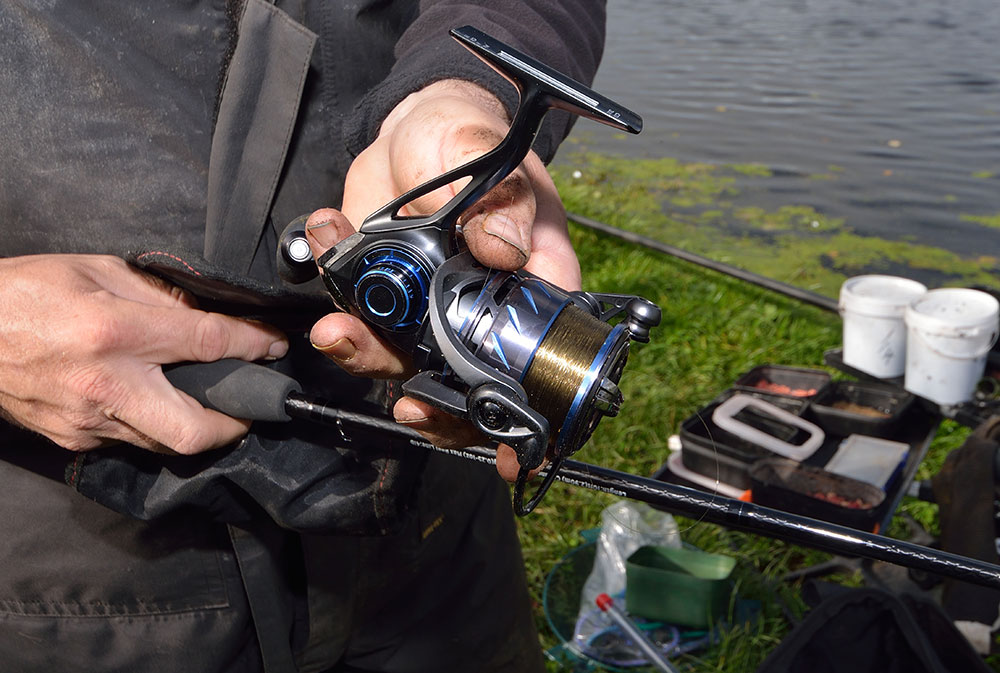
front drag and a lightweight magnesium body. Perfect!
I kicked off the session by delivering eight feederfuls of chopped worm, casters and squatts to the swim, also clipping up to maximise distance accuracy. I used a large Nisa feeder to deposit the initial feed before switching to a small, 10 gram all wire Drennan cage feeder – a three-hole pattern – for the session.
My set-up for the feeder was a simple paternoster which has no swivels or other ‘ironmongery’ in its make-up. The boom to which the feeder is attached is a length of the same line as the reel line (in this case 2lb breaking strain or.14mm diameter). It is tied using a three-turn water knot and you attach the feeder to the line coming out of the top of the knot (i.e. back towards the rod) and this eliminates line twist when retrieving. I tie a five cm figure of eight loop in the end of the boom and loop the feeder on by threading the loop through the feeder swivel and over the feeder itself. Simple enough.
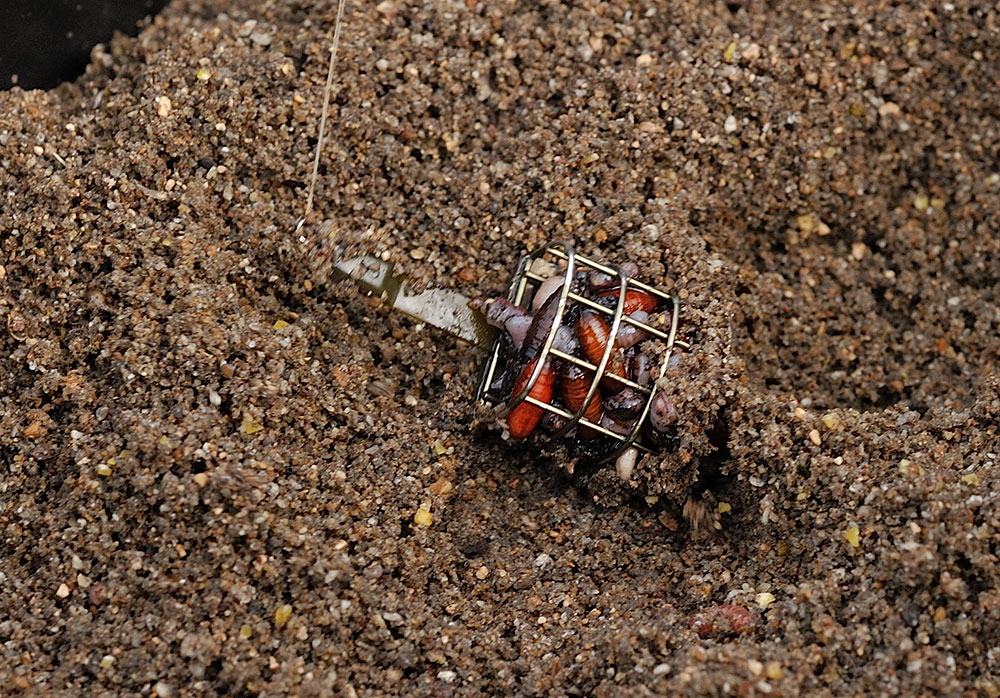
casters, chopped worm and squatts. Ideal bream feed
The hook length – 1.5lb or .10mm mono – was tied on using a two-turn water knot, and the hook was a size 18 Colmic B957. This is a superb hook, light and not at all thick in terms of gauge, yet deceptively strong.
I had about three feet of line (90 cms) including the hook length, from the junction with the paternoster to the feeder and the length of line from the feeder to the junction with the main line was approximately five inches (or 18 cms for the younger readers!)
You may ask why no swivels or clip swivels, or shot to stop a running feeder and my theory is this: Swivels and shot lead to tangles, especially when casting at distance. By eliminating them you eliminate tangles. Some experienced bream anglers I know describe the use of set-ups with ironmongery with the codename RAF. It stands for Rough As F***! You need ask no more questions!
Down to how I fished for the blog. After casting the feeder to the clip I allowed the feeder to stay in situ where it came to rest for about a minute, before lifting the rod a few inches, which pulled the feeder through the area where the feeder’s contents had been deposited and drew the hook bait into the main feed zone.
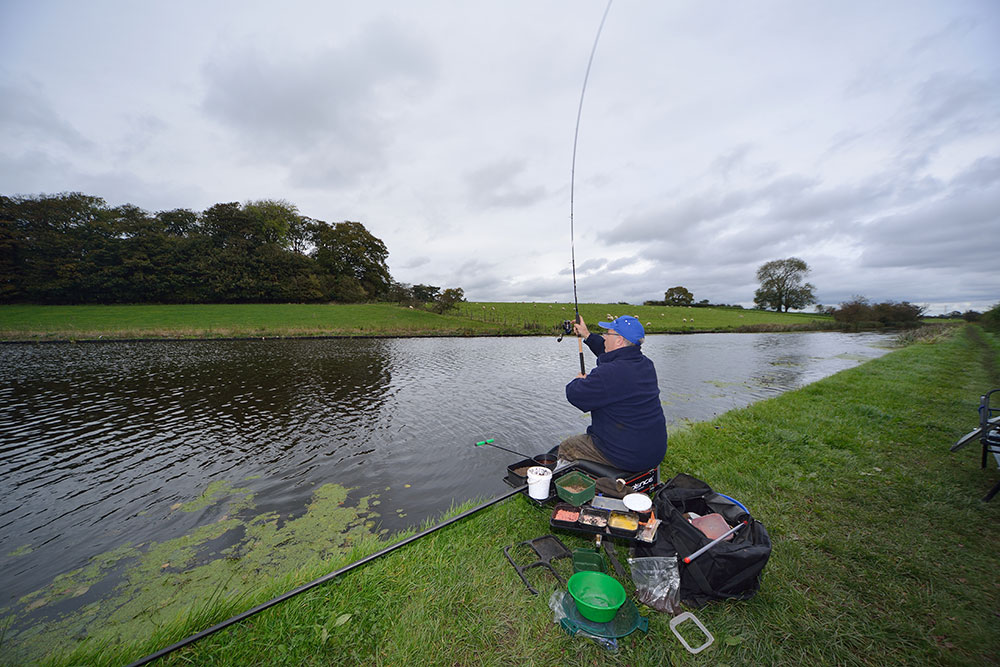
Bites were not mega-confident affairs. Often it was a case of seeing just a small pluck or a pull. However, an hour and a half into the session, having caught maybe eight or nine tiny bottle top skimmers of a round an ounce apiece, plus an off small roach, I had a proper line bite, a good pull of a foot on the tip, before it sprang back.
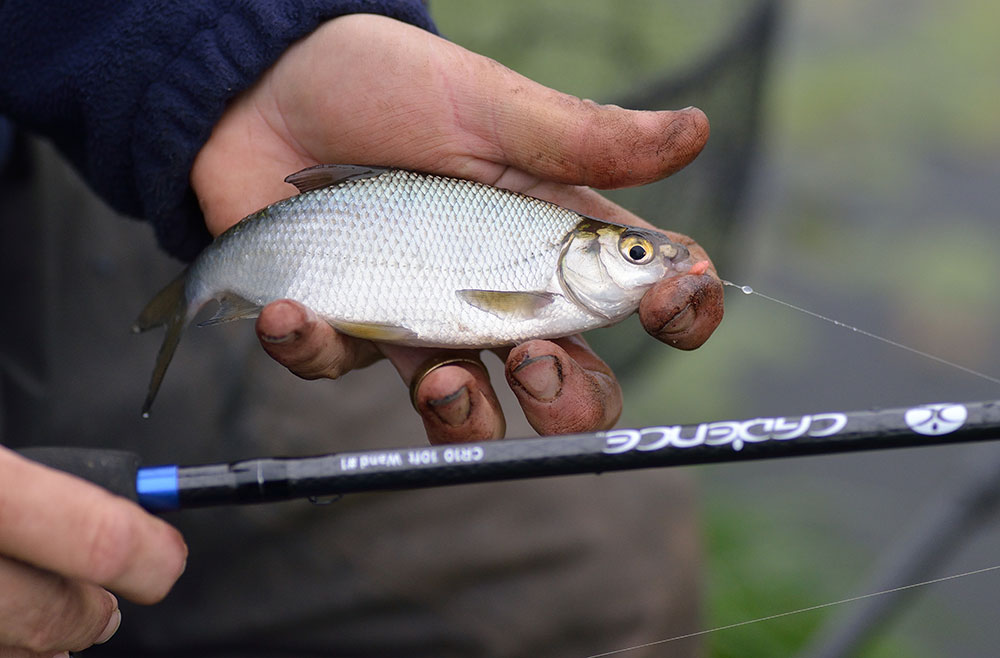
fish before the better bream moved in to feed. Smaller fish like these
could prove vital on a hard winter match or simply to avoid the
dreaded dry net on a pleasure session.
Bream do tend to give themselves away when they arrive in your swim – in the same way that you can tell when an elephant has been standing in the custard in the fridge! You either get liners or you see bubbles, indicating that they are feeding.
They are cumbersome creatures at the best of times, with big fins which do bump into your line, causing false bites or liners. The trick is to be patient and sit on your hands and wait for a proper indication.
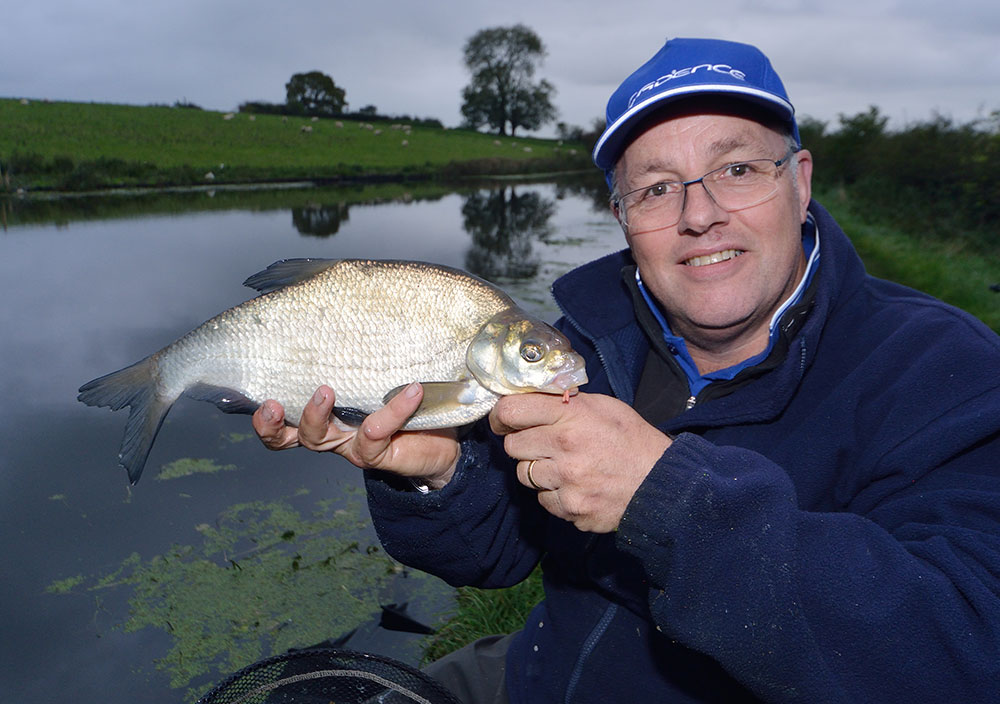
Canal skimmer using the Cadence CR10 No:1 10ft Wand
However, on the day of the blog the bites from the bream I caught were not bold pulls at all. I think the strongest indication only moved the tip a couple of inches, which is a testament to the delicate and sensitive bite registration afforded by the Cadence 10ft wand’s superfine tips. I can only put the shyness of the feeding fish down to the cooling water temperature. We are now well into October and that North Easterly was chilling the water down, no doubt about it. It seemed that the fish were picking up the bait and mouthing it but not swimming off with it.
I ended up with half a dozen decent skimmers of 12oz upwards, generally averaging 1;b 4 to 1lb 8oz. Nice fish! There are only five in the catch picture because we were trying to get a nice picture of one and it flicked, slipped from my grasp and promptly fell back in the water!
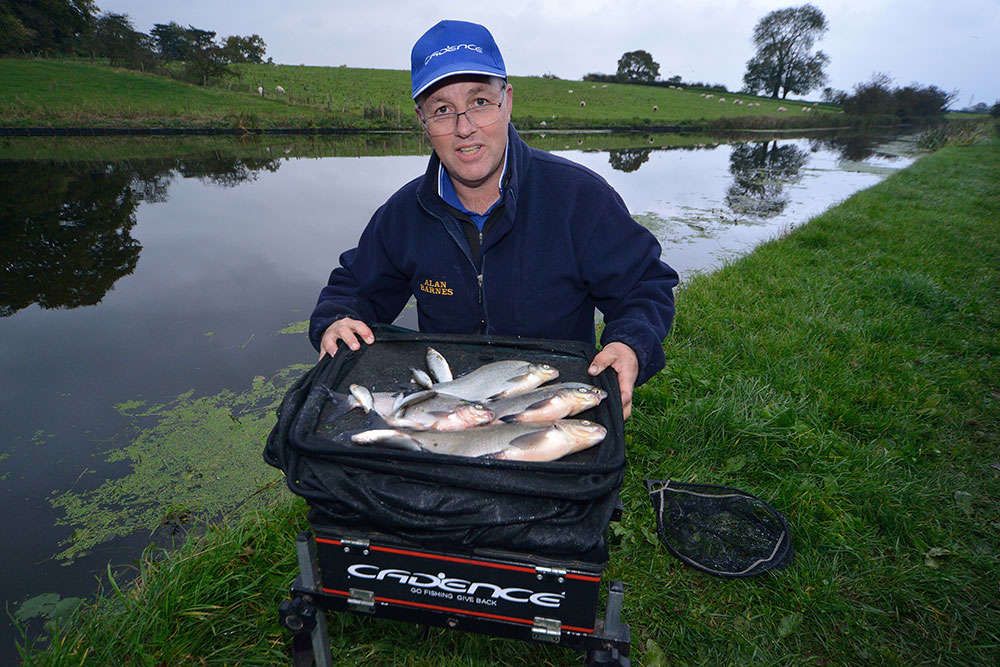
hours on a testing autumn day using the cadence CR10 No:1 10ft wand
and the CS10 3000 reel.
The biggest bream was the last of the day, a stocky fish of around 2lb. Best bait was double fluoro pinkie and worm produced nothing, which is unusual but might have something to do with the cooling water temperature.
Anyway, I ended up with around eight pounds of fish, not bad for a three-hour session on a cool autumn day, and the Cadence CR10 #1 10ft wand and CS10 3000 reel had both proven to be very worthy tools and remarkably good value in this day and age of mega expensive tackle items.
The Cadence CR10 #1 10ft wand sells for £69.99 delivered to your door and the CS10 3000 reel I used is priced at £89.99 delivered, coming with a spare machined aluminium spool as standard.
Two excellent items from the Cadence range and well worth checking out in my humble opinion.
Targeting Lancaster Canal Bream with the Cadence CR10 #1 10ft Wand
